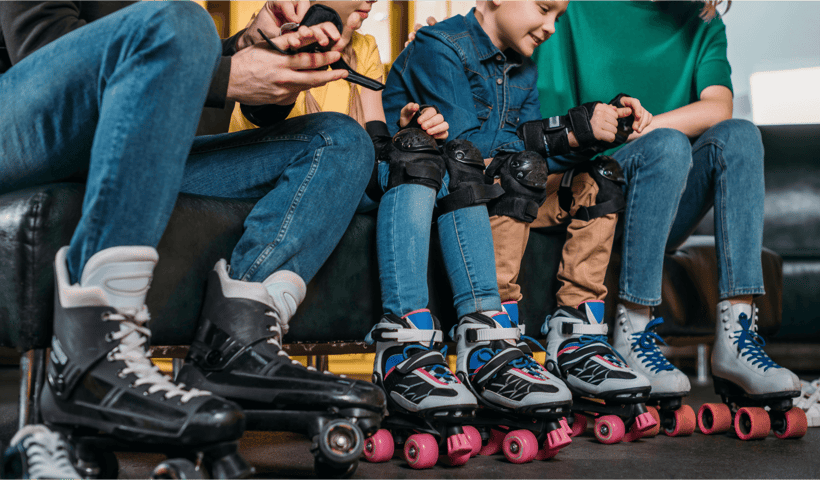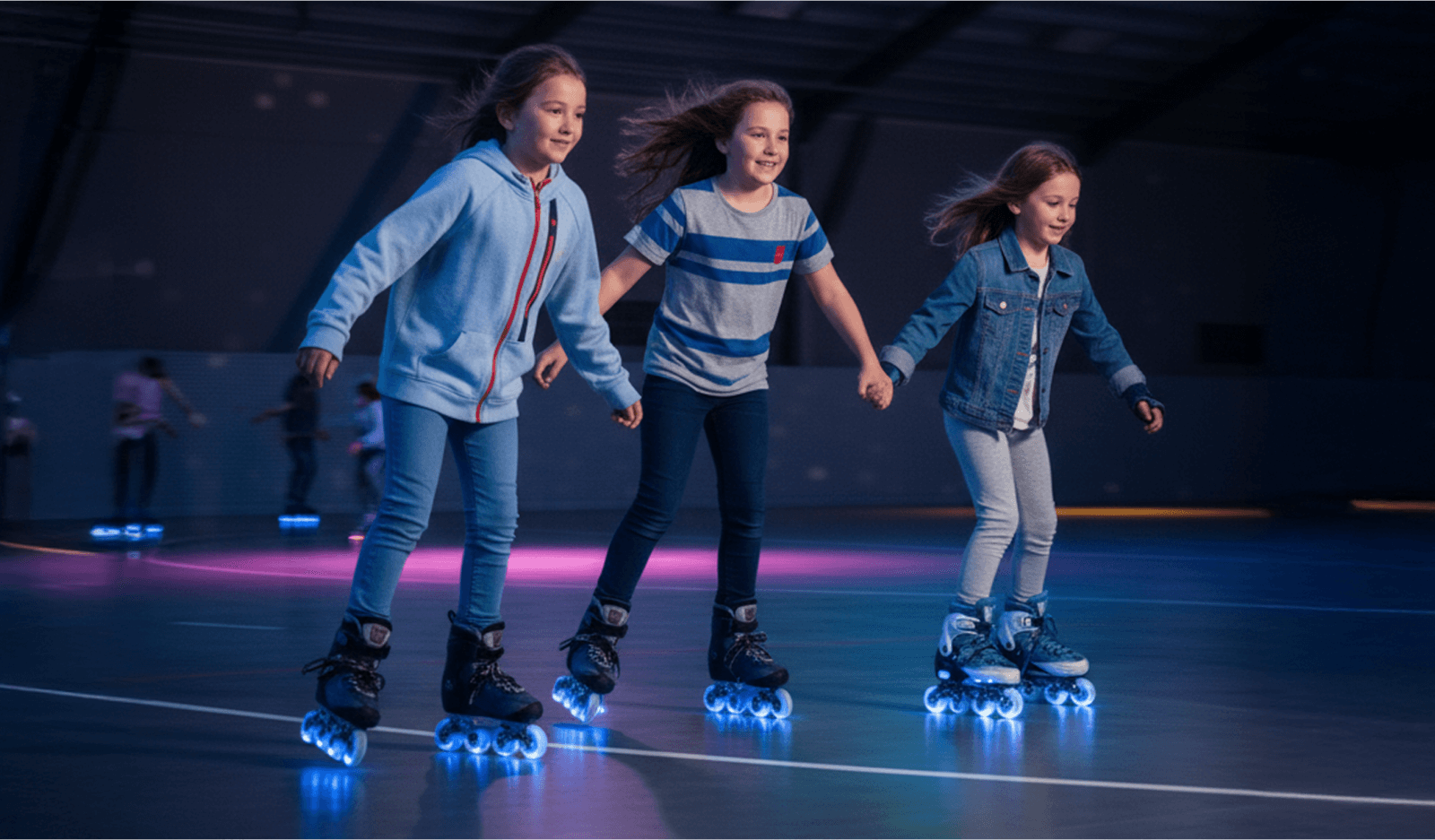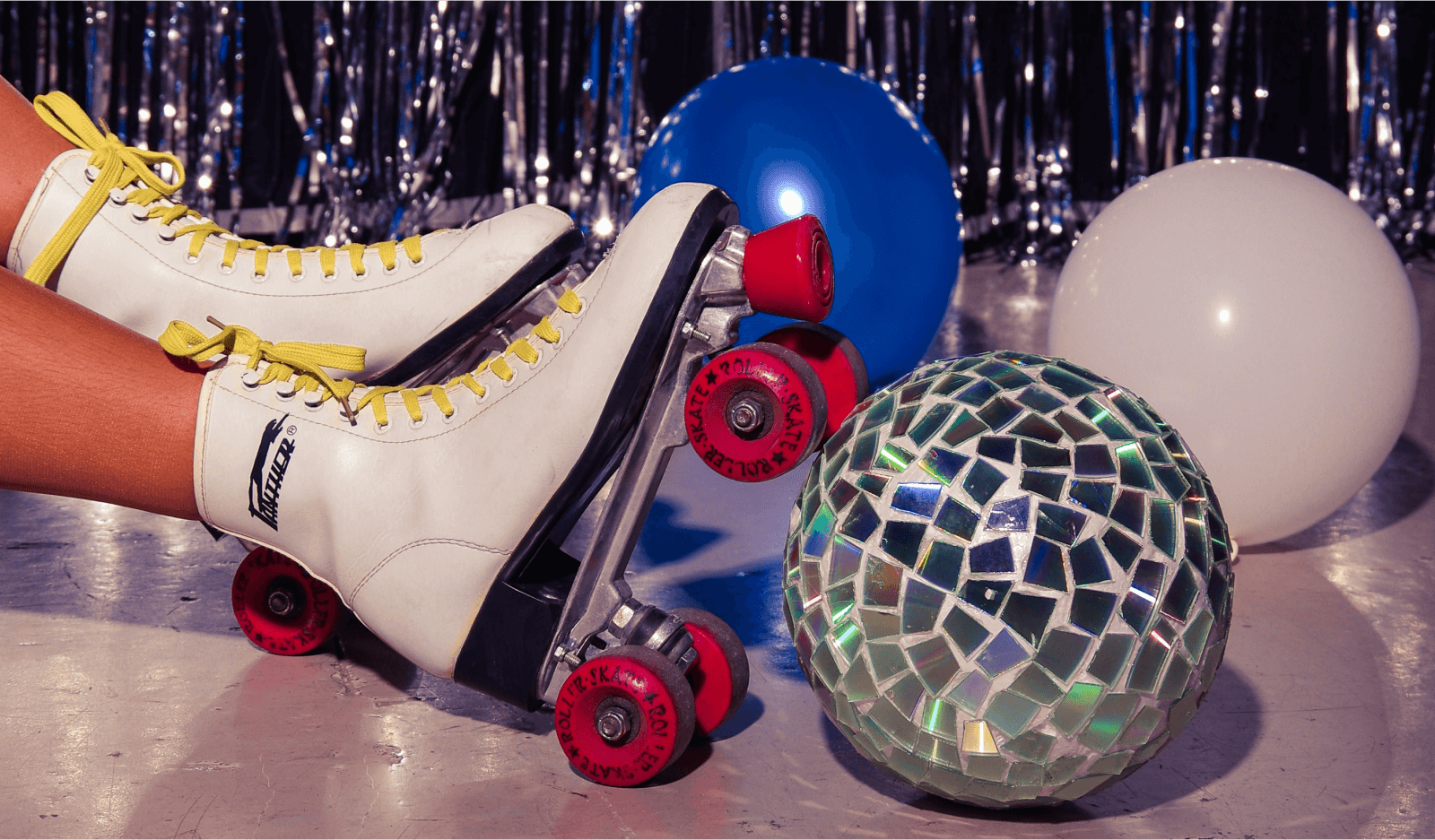Roller Rink Safety: How to Keep Guests Safe and Reduce Risks

Roller skating is all about joy and keeping guests safe helps make sure every visit ends with a smile. A well-run safety program protects your guests, reduces risks for your venue, and shows your community that you’re serious about their wellbeing. Strong safety measures also build trust, which leads to repeat visits, positive word of mouth, and smoother day-to-day operations.
In this guide, we’ll walk you through the essentials of rink safety: from guest education and staff training to equipment upkeep and digital tools that reduce risks. Whether you’re opening a skating rink, looking to scale your existing rink, or exploring new ways to streamline operations, you’ll find strategies to help you run a safer, more successful rink.
Disclaimer: This article is not intended as legal advice. Venues should coordinate with the appropriate bodies for specific information about regulations and guidelines.
Essential roller skating safety guidelines
A safe skating environment starts with clear, consistent rules that protect both your guests and your team. When expectations are easy to understand and well-communicated, skaters are more likely to follow them, and staff find it easier to step in when needed.
Here are some core rules to consider:
- No fast weaving or reckless skating: Keeps the rink floor predictable and reduces collisions.
- No pushing, shoving, or rough play: Helps prevent accidents and ensures everyone feels welcome.
- Skate in the same direction: Reduces the risk of head-on crashes.
- Age- or skill-based zones: Creating separate areas for beginners and experienced skaters ensures each group can skate at their own pace.
- Minimum footwear requirements: No bare feet or unsafe shoes; guests should always wear skates or appropriate footwear in designated areas.
- No skating under the influence: Drugs or alcohol impair judgment and put both the skater and others at risk.
- Clear rules for games or activities: If you offer rink-floor games, have separate rules to manage crowding and keep play safe.
By setting simple, enforceable rules and communicating them clearly, you show guests that their safety comes first, while protecting your business from unnecessary risks. Posting these rules on clear, well-designed signage around your rink (particularly at entrances, rental counters, and the rink floor) helps reinforce expectations and makes it easy for guests to stay informed before they start skating.
Safety equipment for guests
Falls are a natural part of learning to skate and with the right protective gear, those slips are far less likely to result in injuries that spoil the experience. Providing and encouraging the use of safety equipment not only keeps your guests protected, it also reassures families that you’re committed to their wellbeing.
The essentials include:
- Helmets: Especially important for kids and beginners, helmets protect against head injuries and give parents peace of mind.
- Wrist guards: Since many falls end with hands hitting the floor, wrist guards help reduce the risk of sprains and fractures.
- Knee and elbow pads: These pads protect vulnerable joints during slips and falls, making the learning process far less intimidating.
- Properly fitted skates: Regularly checking and maintaining rental skates ensures guests have the right support, reducing the risk of twisted ankles or trips.
- Padded clothing: For beginner lessons or higher-risk activities, padded shorts or jackets can offer extra confidence and protection.
In addition to protecting guests, optional safety equipment can also boost revenue. Many rinks rent or sell protective items as add-ons, giving families flexibility in their level of protection while creating a reliable, recurring income stream for operators.
Staff training
Safety rules only work when they’re consistently followed and enforced. Guests feel more confident when they see your team actively monitoring the rink, offering guidance, and stepping in before situations escalate. For operators, this consistency reduces risks and ensures smoother day-to-day operations.
Every staff member should be trained not only in customer service but also in safety and incident response. That includes:
- Processes for handling rule violations: Clear, fair steps for addressing unsafe behavior.
- First aid training for all team members: So staff can respond quickly to falls or injuries.
- Emergency protocols: From collisions to medical incidents, staff should know exactly what to do and who to call.
- Regular refresher training and drills: Keeping safety top-of-mind ensures staff don’t get complacent.
When your team is trained, confident, and consistent, safety becomes part of the guest experience.
The importance of liability waivers
Even with the best safety measures, accidents can still happen. Requiring all guests to sign a liability waiver before participating is one of the most effective ways to reduce legal risks and ensure compliance with safety protocols. Digital waivers simplify the process, making it easier to collect, store, and retrieve signed documents without adding extra administrative work. Waivers don’t replace good safety practices, but they do provide an added layer of protection for both operators and guests.
Digital liability waivers offer:
- Streamlined check-in process: Allowing guests to sign waivers in advance speeds up entry, reduces wait times, and minimizes congestion at the front desk.
- Easy access: Digital records can be retrieved instantly, eliminating the hassle of searching through stacks of paper. This ensures quick access if a dispute or insurance claim arises.
- Legal protection: In the event of an incident, having a signed waiver on file helps protect your business from liability claims by demonstrating that guests acknowledged and accepted the risks of skating.
- Prevention of lost records: Unlike paper waivers that can be misplaced or damaged, digital waivers are securely stored in the cloud and always accessible when needed.
By integrating digital waivers into your operations, you make safety a seamless part of the guest experience while protecting your business behind the scenes.”
Making guests feel safe and confident
Safety isn’t just about rules and equipment, it’s also about how guests feel when they visit your rink. When guests see you’ve invested in a safe environment, they relax, have more fun, and are more likely to return.
There are several simple but powerful ways to create that sense of reassurance:
- Clear signage and multilingual instructions: Make rules easy to understand for every guest, and provide online safety information so families can prepare before they arrive.
- Dedicated floor monitors in visible uniforms: Guests feel safer knowing staff are nearby and ready to help at any moment.
- Guest feedback systems: Automated post-visit surveys or feedback kiosks help you identify safety concerns quickly and take action before they grow.
- Communicating improvements: When you act on guest feedback and let them know, it shows that you’re listening and committed to their wellbeing.
By making safety visible and approachable, you send a clear message: “You’re in good hands here.” That confidence keeps guests skating longer, recommending your rink, and returning again and again.
Next steps to building a safer, stronger rink
Roller skating is about joy, movement, and community, and when safety is part of that foundation, everyone wins. A well-planned safety program doesn’t just reduce risks; it builds trust, confidence, and long-term loyalty. From clear rules and trained staff to protective equipment and guest feedback, every measure you take strengthens both the guest experience and your business.
With the right tools, keeping your rink safe doesn’t have to be complicated. ROLLER helps operators streamline safety with digital waivers, automated guest feedback, and easy-to-use operational tools that save time while protecting your guests.
Ready to take the next step? Book a demo today.
Disclaimer: This article is not intended as legal advice. Venues should coordinate with the appropriate bodies for specific information about regulations and guidelines.
Frequently asked questions about roller rink safety
What safety equipment should skaters wear?
What training should staff receive to help new skaters?
How do I safely handle skaters at different skill levels?
Should waivers be required for roller rink guests?
Read next: The Ultimate Guide to Choosing Roller Skating Rink Software
Related articles


How to Boost Roller Skating Rink Bookings with Irresistible Party Packages
.png)
2025 Skating Rink Trends: Data and Insights Every Operator Should Know
Enhance your guest experience
Get free education, tips and inspiration to help you run a successful venue.